#design patterns in software engineering
Explore tagged Tumblr posts
Note
40 for the ask game
40. what’s the most interesting item you own?
hmmmmmmmm……
Ooh! Not sure if this is a good answer, but in college when I bought the cheapest used copy of the famous Go4 Design Patterns textbook I could find, I was surprised to find that it had been signed by 3 of the 4 authors!

just needs Erich Gamma to complete the set!
full list for those who want to play
3 notes
·
View notes
Text
Normally I just post about movies but I'm a software engineer by trade so I've got opinions on programming too.
Apparently it's a month of code or something because my dash is filled with people trying to learn Python. And that's great, because Python is a good language with a lot of support and job opportunities. I've just got some scattered thoughts that I thought I'd write down.
Python abstracts a number of useful concepts. It makes it easier to use, but it also means that if you don't understand the concepts then things might go wrong in ways you didn't expect. Memory management and pointer logic is so damn annoying, but you need to understand them. I learned these concepts by learning C++, hopefully there's an easier way these days.
Data structures and algorithms are the bread and butter of any real work (and they're pretty much all that come up in interviews) and they're language agnostic. If you don't know how to traverse a linked list, how to use recursion, what a hash map is for, etc. then you don't really know how to program. You'll pretty much never need to implement any of them from scratch, but you should know when to use them; think of them like building blocks in a Lego set.
Learning a new language is a hell of a lot easier after your first one. Going from Python to Java is mostly just syntax differences. Even "harder" languages like C++ mostly just mean more boilerplate while doing the same things. Learning a new spoken language in is hard, but learning a new programming language is generally closer to learning some new slang or a new accent. Lists in Python are called Vectors in C++, just like how french fries are called chips in London. If you know all the underlying concepts that are common to most programming languages then it's not a huge jump to a new one, at least if you're only doing all the most common stuff. (You will get tripped up by some of the minor differences though. Popping an item off of a stack in Python returns the element, but in Java it returns nothing. You have to read it with Top first. Definitely had a program fail due to that issue).
The above is not true for new paradigms. Python, C++ and Java are all iterative languages. You move to something functional like Haskell and you need a completely different way of thinking. Javascript (not in any way related to Java) has callbacks and I still don't quite have a good handle on them. Hardware languages like VHDL are all synchronous; every line of code in a program runs at the same time! That's a new way of thinking.
Python is stereotyped as a scripting language good only for glue programming or prototypes. It's excellent at those, but I've worked at a number of (successful) startups that all were Python on the backend. Python is robust enough and fast enough to be used for basically anything at this point, except maybe for embedded programming. If you do need the fastest speed possible then you can still drop in some raw C++ for the places you need it (one place I worked at had one very important piece of code in C++ because even milliseconds mattered there, but everything else was Python). The speed differences between Python and C++ are so much smaller these days that you only need them at the scale of the really big companies. It makes sense for Google to use C++ (and they use their own version of it to boot), but any company with less than 100 engineers is probably better off with Python in almost all cases. Honestly thought the best programming language is the one you like, and the one that you're good at.
Design patterns mostly don't matter. They really were only created to make up for language failures of C++; in the original design patterns book 17 of the 23 patterns were just core features of other contemporary languages like LISP. C++ was just really popular while also being kinda bad, so they were necessary. I don't think I've ever once thought about consciously using a design pattern since even before I graduated. Object oriented design is mostly in the same place. You'll use classes because it's a useful way to structure things but multiple inheritance and polymorphism and all the other terms you've learned really don't come into play too often and when they do you use the simplest possible form of them. Code should be simple and easy to understand so make it as simple as possible. As far as inheritance the most I'm willing to do is to have a class with abstract functions (i.e. classes where some functions are empty but are expected to be filled out by the child class) but even then there are usually good alternatives to this.
Related to the above: simple is best. Simple is elegant. If you solve a problem with 4000 lines of code using a bunch of esoteric data structures and language quirks, but someone else did it in 10 then I'll pick the 10. On the other hand a one liner function that requires a lot of unpacking, like a Python function with a bunch of nested lambdas, might be easier to read if you split it up a bit more. Time to read and understand the code is the most important metric, more important than runtime or memory use. You can optimize for the other two later if you have to, but simple has to prevail for the first pass otherwise it's going to be hard for other people to understand. In fact, it'll be hard for you to understand too when you come back to it 3 months later without any context.
Note that I've cut a few things for simplicity. For example: VHDL doesn't quite require every line to run at the same time, but it's still a major paradigm of the language that isn't present in most other languages.
Ok that was a lot to read. I guess I have more to say about programming than I thought. But the core ideas are: Python is pretty good, other languages don't need to be scary, learn your data structures and algorithms and above all keep your code simple and clean.
#programming#python#software engineering#java#java programming#c++#javascript#haskell#VHDL#hardware programming#embedded programming#month of code#design patterns#common lisp#google#data structures#algorithms#hash table#recursion#array#lists#vectors#vector#list#arrays#object oriented programming#functional programming#iterative programming#callbacks
20 notes
·
View notes
Text
Abstraction in design patterns

Abstraction in design patterns is a fundamental concept that focuses on hiding complex implementation details and exposing only essential information or functionalities. It allows you to work with objects or systems at a higher level of understanding, without needing to know how they work internally. Think of it like driving a car: you know how to steer, accelerate, and brake, but you don't need to understand the intricate workings of the engine, transmission, or other internal components to drive effectively.
Here's a breakdown of what abstraction means in the context of design patterns:
Simplification: Abstraction simplifies complex systems by breaking them down into manageable, understandable units. It reduces cognitive overload by focusing on what an object does, not how it does it.
Generalization: Abstraction allows you to treat different objects in a uniform way, as long as they share a common interface or abstract class. This promotes code reusability and flexibility. For example, you might have different types of payment processors (credit card, PayPal, etc.), but you can interact with them through a common "PaymentProcessor" interface.
Information Hiding: Abstraction hides the internal state and implementation details of an object from the outside world. This protects the integrity of the object and prevents external code from becoming dependent on specific implementation details, which could make the system brittle and difficult to change.
Creating a Contract: An abstract class or interface defines a contract that concrete classes must adhere to. This ensures consistency and predictability in how objects interact. Anyone using an object that implements a specific interface knows what methods to expect and how they will behave.
Enabling Polymorphism: Abstraction is crucial for polymorphism, which allows objects of different classes to be treated as objects of a common type. This is a powerful concept that enables flexible and extensible designs.
How Abstraction is Used in Design Patterns:
Many design patterns rely heavily on abstraction. Here are a few examples:
Factory Pattern: The Factory pattern abstracts the process of object creation. Instead of directly instantiating concrete classes, you ask a factory to create the objects for you. This decouples the client code from the specific classes being created.
Strategy Pattern: The Strategy pattern allows you to choose an algorithm at runtime. The different algorithms are abstracted behind a common interface, so the client code can switch between them without needing to know the specific implementation of each algorithm.
Facade Pattern: The Facade pattern provides a simplified interface to a complex subsystem. It hides the complexity of the subsystem behind a single, easy-to-use object.
Observer Pattern: The Observer pattern allows objects to be notified of changes in the state of another object. The details of how the notification is implemented are abstracted away, so the observer doesn't need to know how the subject manages its state.
In summary: Abstraction in design patterns is about creating simplified views of complex systems, hiding implementation details, and focusing on essential functionalities. It's a powerful tool for building flexible, maintainable, and reusable code.
1 note
·
View note
Text
Understanding the Decorator Pattern in Swift: A Practical Example
Overview Design patterns are a cornerstone of software development, providing reusable solutions to common problems. The Decorator Pattern is a structural design pattern that allows you to dynamically add new behavior to objects without altering their structure. It follows the Open/Closed Principle, which states that a class should be open for extension but closed for modification. In this…
0 notes
Text
Binary Search in Java
Let us see the definition of binary search in Java:
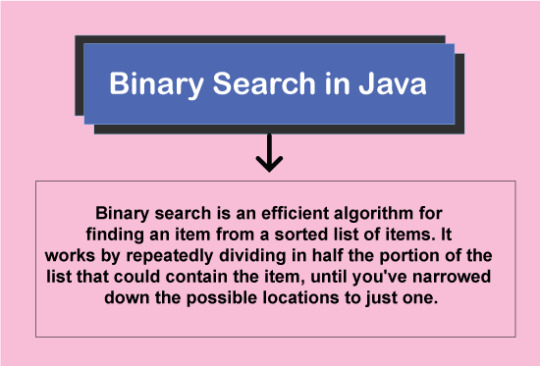
#java#programming#javaprogramming#code#coding#engineering#computer#computerscience#computertechnology#software#softwaredevelopment#education#technology#design#patterns#online
1 note
·
View note
Text
Top 10 ChatGPT Prompts For Software Developers
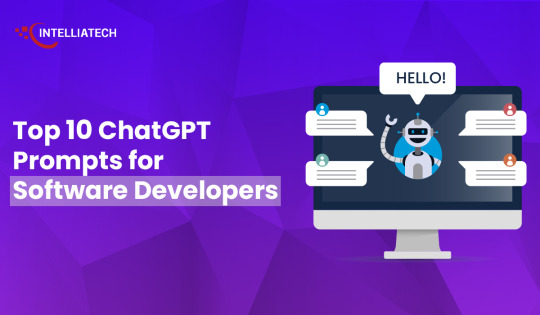
ChatGPT can do a lot more than just code creation and this blog post is going to be all about that. We have curated a list of ChatGPT prompts that will help software developers with their everyday tasks. ChatGPT can respond to questions and can compose codes making it a very helpful tool for software engineers.
While this AI tool can help developers with the entire SDLC (Software Development Lifecycle), it is important to understand how to use the prompts effectively for different needs.
Prompt engineering gives users accurate results. Since ChatGPT accepts prompts, we receive more precise answers. But a lot depends on how these prompts are formulated.
To Get The Best Out Of ChatGPT, Your Prompts Should Be:
Clear and well-defined. The more detailed your prompts, the better suggestions you will receive from ChatGPT.
Specify the functionality and programming language. Not specifying what you exactly need might not give you the desired results.
Phrase your prompts in a natural language, as if asking someone for help. This will make ChatGPT understand your problem better and give more relevant outputs.
Avoid unnecessary information and ambiguity. Keep it not only to the point but also inclusive of all important details.
Top ChatGPT Prompts For Software Developers
Let’s quickly have a look at some of the best ChatGPT prompts to assist you with various stages of your Software development lifecycle.
1. For Practicing SQL Commands;

2. For Becoming A Programming Language Interpreter;

3. For Creating Regular Expressions Since They Help In Managing, Locating, And Matching Text.

4. For Generating Architectural Diagrams For Your Software Requirements.
Prompt Examples: I want you to act as a Graphviz DOT generator, an expert to create meaningful diagrams. The diagram should have at least n nodes (I specify n in my input by writing [n], 10 being the default value) and to be an accurate and complex representation of the given input. Each node is indexed by a number to reduce the size of the output, should not include any styling, and with layout=neato, overlap=false, node [shape=rectangle] as parameters. The code should be valid, bugless and returned on a single line, without any explanation. Provide a clear and organized diagram, the relationships between the nodes have to make sense for an expert of that input. My first diagram is: “The water cycle [8]”.

5. For Solving Git Problems And Getting Guidance On Overcoming Them.
Prompt Examples: “Explain how to resolve this Git merge conflict: [conflict details].” 6. For Code generation- ChatGPT can help generate a code based on descriptions given by you. It can write pieces of codes based on the requirements given in the input. Prompt Examples: -Write a program/function to {explain functionality} in {programming language} -Create a code snippet for checking if a file exists in Python. -Create a function that merges two lists into a dictionary in JavaScript.
7. For Code Review And Debugging: ChatGPT Can Review Your Code Snippet And Also Share Bugs.
Prompt Examples: -Here’s a C# code snippet. The function is supposed to return the maximum value from the given list, but it’s not returning the expected output. Can you identify the problem? [Enter your code here] -Can you help me debug this error message from my C# program: [error message] -Help me debug this Python script that processes a list of objects and suggests possible fixes. [Enter your code here]
8. For Knowing The Coding Best Practices And Principles: It Is Very Important To Be Updated With Industry’s Best Practices In Coding. This Helps To Maintain The Codebase When The Organization Grows.
Prompt Examples: -What are some common mistakes to avoid when writing code? -What are the best practices for security testing? -Show me best practices for writing {concept or function} in {programming language}.
9. For Code Optimization: ChatGPT Can Help Optimize The Code And Enhance Its Readability And Performance To Make It Look More Efficient.
Prompt Examples: -Optimize the following {programming language} code which {explain the functioning}: {code snippet} -Suggest improvements to optimize this C# function: [code snippet] -What are some strategies for reducing memory usage and optimizing data structures?
10. For Creating Boilerplate Code: ChatGPT Can Help In Boilerplate Code Generation.
Prompt Examples: -Create a basic Java Spring Boot application boilerplate code. -Create a basic Python class boilerplate code
11. For Bug Fixes: Using ChatGPT Helps Fixing The Bugs Thus Saving A Large Chunk Of Time In Software Development And Also Increasing Productivity.
Prompt Examples: -How do I fix the following {programming language} code which {explain the functioning}? {code snippet} -Can you generate a bug report? -Find bugs in the following JavaScript code: (enter code)
12. Code Refactoring- ChatGPt Can Refactor The Code And Reduce Errors To Enhance Code Efficiency, Thus Making It Easier To Modify In The Future.
Prompt Examples –What are some techniques for refactoring code to improve code reuse and promote the use of design patterns? -I have duplicate code in my project. How can I refactor it to eliminate redundancy?
13. For Choosing Deployment Strategies- ChatGPT Can Suggest Deployment Strategies Best Suited For A Particular Project And To Ensure That It Runs Smoothly.
Prompt Examples -What are the best deployment strategies for this software project? {explain the project} -What are the best practices for version control and release management?
14. For Creating Unit Tests- ChatGPT Can Write Test Cases For You
Prompt Examples: -How does test-driven development help improve code quality? -What are some best practices for implementing test-driven development in a project? These were some prompt examples for you that we sourced on the basis of different requirements a developer can have. So whether you have to generate a code or understand a concept, ChatGPT can really make a developer’s life by doing a lot of tasks. However, it certainly comes with its own set of challenges and cannot always be completely correct. So it is advisable to cross-check the responses. Hope this helps. Visit us- Intelliatech
#ChatGPT prompts#Developers#Terminal commands#JavaScript console#API integration#SQL commands#Programming language interpreter#Regular expressions#Code debugging#Architectural diagrams#Performance optimization#Git merge conflicts#Prompt engineering#Code generation#Code refactoring#Debugging#Coding best practices#Code optimization#Code commenting#Boilerplate code#Software developers#Programming challenges#Software documentation#Workflow automation#SDLC (Software Development Lifecycle)#Project planning#Software requirements#Design patterns#Deployment strategies#Security testing
0 notes
Text

Hey people! As announced I did it! I uploaded my new video about the Factory Method Pattern in Java and Python yesterday, Sat, 8 a.m (CET). So far, it is my best-performing video of all 6 videos on my channel, hitting 43 views within the first 19 hours of being uploaded. This is a record for my new channel, currently counting 30 subscribers! I know, those are small numbers, but I am very happy and proud already about these results! 😀 Click here for the Video on YouTube
#java#python#design patterns#python for beginners#java for beginners#coding is fun#100daysofcode#javaprogramming#softwaredevelopment#coding#technology#software#developers#programming#software engineering#100
0 notes
Text
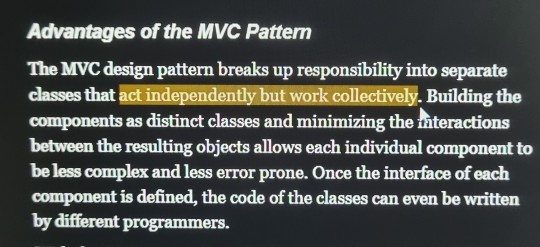
So true for life as well!
"Act independently but work collectively."
_ Irv Kalb
0 notes
Photo

Service Oriented Architecture (SOA) Design Principle: Coupling, Cohesion, and Granularity
This is a short preview of the article: In the realm of Service Oriented Architecture (SOA) design principles, the concepts of Service Coupling, Service Cohesion, and Service Granularity play pivotal roles in shaping a robust and effective architectural framework. Service Coupling refers to the degree of interdependence between any two
If you like it consider checking out the full version of the post at: Service Oriented Architecture (SOA) Design Principle: Coupling, Cohesion, and Granularity
If you are looking for ideas for tweet or re-blog this post you may want to consider the following hashtags:
Hashtags: #API, #APIs, #Cohesion, #ComputerScience, #Coupling, #DesignPatterns, #Granularity, #ServiceOrientedArchitecture, #SOA, #SoftwareArchitecture, #SoftwareEngineering, #SoftwarePatterns
The Hashtags of the Categories are: #Java, #Programming, #Python, #SoftwareEngineering
Service Oriented Architecture (SOA) Design Principle: Coupling, Cohesion, and Granularity is available at the following link: https://francescolelli.info/software-engineering/service-oriented-architecture-soa-design-principle-coupling-cohesion-and-granularity/ You will find more information, stories, examples, data, opinions and scientific papers as part of a collection of articles about Information Management, Computer Science, Economics, Finance and More.
The title of the full article is: Service Oriented Architecture (SOA) Design Principle: Coupling, Cohesion, and Granularity
It belong to the following categories: Java, Programming, Python, Software Engineering
The most relevant keywords are: API, APIs, Cohesion, computer science, Coupling, Design Patterns, Granularity, Service Oriented Architecture, SOA, software architecture, software engineering, Software Patterns
It has been published by Francesco Lelli at Francesco Lelli a blog about Information Management, Computer Science, Finance, Economics and nearby ideas and opinions
In the realm of Service Oriented Architecture (SOA) design principles, the concepts of Service Coupling, Service Cohesion, and Service Granularity play pivotal roles in shaping a robust and effective architectural framework. Service Coupling refers to the degree of interdependence between any two
Hope you will find it interesting and that it will help you in your journey
In the realm of Service Oriented Architecture (SOA) design principles, the concepts of Service Coupling, Service Cohesion, and Service Granularity play pivotal roles in shaping a robust and effective architectural framework. Service Coupling refers to the degree of interdependence between any two business processes. In the context of SOA, weak coupling is highly preferred as…
#API#APIs#Cohesion#computer science#Coupling#Design Patterns#Granularity#Service Oriented Architecture#SOA#software architecture#software engineering#Software Patterns
0 notes
Text
Developing software with artificial intelligence (machine learning) and blockchain capabilities.
#videoseries#showcasing#experience#deepdive :#softwareengineering#software#engineering#data#structure#datastructure#objectorientedprogramming#object#oriented#programming#designpatterns#design#patterns#plgorithms.#web#mobile#application#development.#storage#Databases#devOps#dev#operations#datascience.#automating#pipelines
1 note
·
View note
Text
How lock-in hurts design

Berliners: Otherland has added a second date (Jan 28) for my book-talk after the first one sold out - book now!

If you've ever read about design, you've probably encountered the idea of "paving the desire path." A "desire path" is an erosion path created by people departing from the official walkway and taking their own route. The story goes that smart campus planners don't fight the desire paths laid down by students; they pave them, formalizing the route that their constituents have voted for with their feet.
Desire paths aren't always great (Wikipedia notes that "desire paths sometimes cut through sensitive habitats and exclusion zones, threatening wildlife and park security"), but in the context of design, a desire path is a way that users communicate with designers, creating a feedback loop between those two groups. The designers make a product, the users use it in ways that surprise the designer, and the designer integrates all that into a new revision of the product.
This method is widely heralded as a means of "co-innovating" between users and companies. Designers who practice the method are lauded for their humility, their willingness to learn from their users. Tech history is strewn with examples of successful paved desire-paths.
Take John Deere. While today the company is notorious for its war on its customers (via its opposition to right to repair), Deere was once a leader in co-innovation, dispatching roving field engineers to visit farms and learn how farmers had modified their tractors. The best of these modifications would then be worked into the next round of tractor designs, in a virtuous cycle:
https://securityledger.com/2019/03/opinion-my-grandfathers-john-deere-would-support-our-right-to-repair/
But this pattern is even more pronounced in the digital world, because it's much easier to update a digital service than it is to update all the tractors in the field, especially if that service is cloud-based, meaning you can modify the back-end everyone is instantly updated. The most celebrated example of this co-creation is Twitter, whose users created a host of its core features.
Retweets, for example, were a user creation. Users who saw something they liked on the service would type "RT" and paste the text and the link into a new tweet composition window. Same for quote-tweets: users copied the URL for a tweet and pasted it in below their own commentary. Twitter designers observed this user innovation and formalized it, turning it into part of Twitter's core feature-set.
Companies are obsessed with discovering digital desire paths. They pay fortunes for analytics software to produce maps of how their users interact with their services, run focus groups, even embed sneaky screen-recording software into their web-pages:
https://www.wired.com/story/the-dark-side-of-replay-sessions-that-record-your-every-move-online/
This relentless surveillance of users is pursued in the name of making things better for them: let us spy on you and we'll figure out where your pain-points and friction are coming from, and remove those. We all win!
But this impulse is a world apart from the humility and respect implied by co-innovation. The constant, nonconsensual observation of users has more to do with controlling users than learning from them.
That is, after all, the ethos of modern technology: the more control a company can exert over its users ,the more value it can transfer from those users to its shareholders. That's the key to enshittification, the ubiquitous platform decay that has degraded virtually all the technology we use, making it worse every day:
https://pluralistic.net/2023/02/19/twiddler/
When you are seeking to control users, the desire paths they create are all too frequently a means to wrestling control back from you. Take advertising: every time a service makes its ads more obnoxious and invasive, it creates an incentive for its users to search for "how do I install an ad-blocker":
https://www.eff.org/deeplinks/2019/07/adblocking-how-about-nah
More than half of all web-users have installed ad-blockers. It's the largest consumer boycott in human history:
https://doc.searls.com/2023/11/11/how-is-the-worlds-biggest-boycott-doing/
But zero app users have installed ad-blockers, because reverse-engineering an app requires that you bypass its encryption, triggering liability under Section 1201 of the Digital Millennium Copyright Act. This law provides for a $500,000 fine and a 5-year prison sentence for "circumvention" of access controls:
https://pluralistic.net/2024/01/12/youre-holding-it-wrong/#if-dishwashers-were-iphones
Beyond that, modifying an app creates liability under copyright, trademark, patent, trade secrets, noncompete, nondisclosure and so on. It's what Jay Freeman calls "felony contempt of business model":
https://locusmag.com/2020/09/cory-doctorow-ip/
This is why services are so horny to drive you to install their app rather using their websites: they are trying to get you to do something that, given your druthers, you would prefer not to do. They want to force you to exit through the gift shop, you want to carve a desire path straight to the parking lot. Apps let them mobilize the law to literally criminalize those desire paths.
An app is just a web-page wrapped in enough IP to make it a felony to block ads in it (or do anything else that wrestles value back from a company). Apps are web-pages where everything not forbidden is mandatory.
Seen in this light, an app is a way to wage war on desire paths, to abandon the cooperative model for co-innovation in favor of the adversarial model of user control and extraction.
Corporate apologists like to claim that the proliferation of apps proves that users like them. Neoliberal economists love the idea that business as usual represents a "revealed preference." This is an intellectually unserious tautology: "you do this, so you must like it":
https://boingboing.net/2024/01/22/hp-ceo-says-customers-are-a-bad-investment-unless-they-can-be-made-to-buy-companys-drm-ink-cartridges.html
Calling an action where no alternatives are permissible a "preference" or a "choice" is a cheap trick – especially when considered against the "preferences" that reveal themselves when a real choice is possible. Take commercial surveillance: when Apple gave Ios users a choice about being spied on – a one-click opt of of app-based surveillance – 96% of users choice no spying:
https://arstechnica.com/gadgets/2021/05/96-of-us-users-opt-out-of-app-tracking-in-ios-14-5-analytics-find/
But then Apple started spying on those very same users that had opted out of spying by Facebook and other Apple competitors:
https://pluralistic.net/2022/11/14/luxury-surveillance/#liar-liar
Neoclassical economists aren't just obsessed with revealed preferences – they also love to bandy about the idea of "moral hazard": economic arrangements that tempt people to be dishonest. This is typically applied to the public ("consumers" in the contemptuous parlance of econospeak). But apps are pure moral hazard – for corporations. The ability to prohibit desire paths – and literally imprison rivals who help your users thwart those prohibitions – is too tempting for companies to resist.
The fact that the majority of web users block ads reveals a strong preference for not being spied on ("users just want relevant ads" is such an obvious lie that doesn't merit any serious discussion):
https://www.iccl.ie/news/82-of-the-irish-public-wants-big-techs-toxic-algorithms-switched-off/
Giant companies attained their scale by learning from their users, not by thwarting them. The person using technology always knows something about what they need to do and how they want to do it that the designers can never anticipate. This is especially true of people who are unlike those designers – people who live on the other side of the world, or the other side of the economic divide, or whose bodies don't work the way that the designers' bodies do:
https://pluralistic.net/2022/10/20/benevolent-dictators/#felony-contempt-of-business-model
Apps – and other technologies that are locked down so their users can be locked in – are the height of technological arrogance. They embody a belief that users are to be told, not heard. If a user wants to do something that the designer didn't anticipate, that's the user's fault:
https://www.wired.com/2010/06/iphone-4-holding-it-wrong/
Corporate enthusiasm for prohibiting you from reconfiguring the tools you use to suit your needs is a declaration of the end of history. "Sure," John Deere execs say, "we once learned from farmers by observing how they modified their tractors. But today's farmers are so much stupider and we are so much smarter that we have nothing to learn from them anymore."
Spying on your users to control them is a poor substitute asking your users their permission to learn from them. Without technological self-determination, preferences can't be revealed. Without the right to seize the means of computation, the desire paths never emerge, leaving designers in the dark about what users really want.
Our policymakers swear loyalty to "innovation" but when corporations ask for the right to decide who can innovate and how, they fall all over themselves to create laws that let companies punish users for the crime of contempt of business-model.
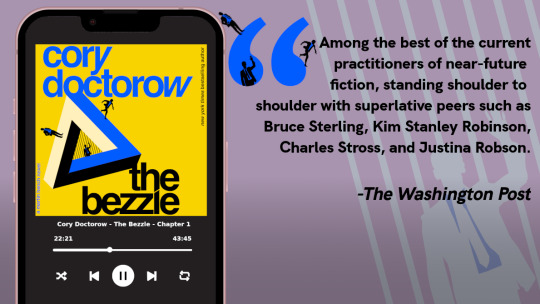
I'm Kickstarting the audiobook for The Bezzle, the sequel to Red Team Blues, narrated by @wilwheaton! You can pre-order the audiobook and ebook, DRM free, as well as the hardcover, signed or unsigned. There's also bundles with Red Team Blues in ebook, audio or paperback.

If you'd like an essay-formatted version of this post to read or share, here's a link to it on pluralistic.net, my surveillance-free, ad-free, tracker-free blog:
https://pluralistic.net/2024/01/24/everything-not-mandatory/#is-prohibited

Image: Belem (modified) https://commons.wikimedia.org/wiki/File:Desire_path_%2819811581366%29.jpg
CC BY 2.0 https://creativecommons.org/licenses/by/2.0/deed.en
#pluralistic#desire paths#design#drm#everything not mandatory is prohibited#apps#ip#innovation#user innovation#technological self-determination#john deere#twitter#felony contempt of business model
3K notes
·
View notes
Text
The Astrology About Your Difficult Placements & Turning Them Into A Career Opportunity
Note: This post is based on my personal observations and patterns I've noticed over the years. It's important to understand that no single placement in a chart can determine whether someone is “good” or “bad,” a success or a failure, or even something as extreme as a criminal. Astrology is complex, and the entire birth chart must be considered as a whole. What we often label as "difficult" placements can actually become powerful sources of strength if we choose to approach them with awareness, effort, and a growth mindset. These placements aren’t curses, they’re invitations to evolve. This post is based on Vedic/Sidereal Astrology.
Astrology is a lot like Google Maps, it shows you possible routes to your destination, but it’s still up to you which path to take. It can guide, not dictate. That’s why I find it disheartening when some astrologers deliver overly negative interpretations that leave people feeling helpless or afraid and making serious life decisions based on it. Every placement holds multiple possibilities, some more challenging than others. With awareness and the right mindset, even the toughest placements can become powerful tools for growth.
These placements don’t doom you, they challenge you to rise.
Mars in 12th - Hidden enemies, betrayal from co-workers/colleagues, vehicle accidents, high blood pressure, imprisonment, compulsive behavior, hit man.
On the bright side, this is a good placement for martial artists, military careers, architectural /structural engineering, psychologist, working in intelligence or secret service, crime scene investigator, MMA fighter, monk, athletes, etc.
Moon in 8th - Volcanic emotions often buried. Might be emotionally manipulative in a subtle way. Intense and secretive and hide their emotions. Reads people with their x-ray vision.
On the bright side, this is a good placement for healers, astrologer, detective, investigator, researcher, astronomer, criminal profiler, hospice worker, witch, therapist, grief counselor, cult leader, etc.
Venus in 8th - Can get into surface-level relationships for "convenience". STDs, in some cases. Financial ruin from the partners. Betrays/cheats or the other way around.
On the bright side, this is a good placement for relationship counselor, sex therapist, even porn stars, financial advisor, lobbyist, artists, script writer, photographers, videographers, model, financial firm chairman, business owner, club/casino owner/worker, etc.
North Node in 1st - Prone to attract scandals, betrayals. Identity crisis. Chases validation, success or people only to feel empty. Project an image that's not real.
On the bright side, this is a good placement for social media influencer, streamer, entrepreneur, lawyer, public figure, vlogger, model, activist, etc.
Sun in 12th - Side character in their own life. Hypochondriacs. Felt underappreciated or not recognized for your self-worth. Isolate themselves when depression hits.
On the bright side, this is a good placement for foreign settlement or just moving far away from birth place where they get recognized for being an entrepreneur, startup founder, politician or govt jobs in a foreign country/state, behind-the- scenes work in the movie industry, freelancer, software engineer, etc.
Venus in 6th - Overindulgence in food/drinks. Ovarian cyst for women. Menstrual issues. Prone to get STDs. Betrayal from women. Having a crazy ex.
On the bright side, this is a good placement for service workers, emergency care, veterinarian, doctor, nurse, mental health worker, wellness coach, interior designer, HR, cosmetologist, gynaecologist, pet groomer, dog walker, plastic surgeon, Hairstylist, Makeup specialist, homemaker, hospitality worker, etc.
Mars in 6th - Workplace drama. Chronic illness. Rude to others or other way around. Betrayal from men. Might be a smoker.
On the bright side, this is a good placement for chefs, firefighters, military careers, surgeon, personal trainer, conflict resolution expert, racer, raw material manufacturer, athletes, Managerial positions in the hospitality/retail industry, architect, engineer, etc.
South node in 4th - Detachment from home life or unstable family situation. Foster care, in some cases. Odd one out of the family in some cases.
On the bright side, this is a good placement for a travel consultant/guide, social worker, game developer, life coach, realtor, real estate agent, antique items seller, costume designer, comic artist, comedian script writer, animator, VFX specialist, foster care worker, paediatrician, nutritionist, etc.
North node in 8th - Prone to get into trouble with law enforcement. Into drugs. In and out of jail in some cases. Stalker or the other way around. Pimp, in some cases.
On the bright side, this is a good placement for a criminal lawyer, police officer, forensic investigator, crime or thriller writer, crisis management expert, industrial worker, manufacturer, de-addiction center worker, activist, law enforcement, etc.
Saturn in 4th - Childhood trauma or abuse. Protein or vitamin deficiency, in some cases. Punished/emotional neglect by a parent, in some cases.
On the bright side, this is a good placement for an architect, realtor, nuclear power plant engineer/worker, zookeeper, homeless shelter worker, factory worker, volcanologist, meteorologist, nutritionist, bio tech careers, newsreader, magazine/article writer, TV show host, small business owner, carpenter, etc.
Wanna go deeper into the layers of your placements? DM me for a complete astrology reading or a 5 year/8 year marriage report or synastry reading🌙💬 and check out my pinned post for pricing + details 💫💸
Let’s decode your cosmic chaos together ⭐
Part 2 of this post will be about retrograde planets!
#astrology#astrology readings#birth chart#astro observations#astro notes#spirituality#spiritual awakening#spiritual journey#zodiac signs#vedic astrology#vedic philosophy#vedic astro notes#vedicwisdom#vedic chart#vedic astro observations#astrologer#astro placements#astro community#astro tumblr#astrology notes#astrology signs#astrology tumblr#natal placements#natal chart#natal astrology#natal aspects#astrology blog#astrology chart#astrology observations#astrology community
295 notes
·
View notes
Text


My OC’s character sheet, and down below her lore/backstory/ability awakening: ⬇️
Silva was ten years old when her ability awakened,
Just ten—and she’d been happy that morning. Her scarf was red, her fingers a little numb from the cold, and she’d stolen a piece of chocolate from the kitchen for her little sister Shizu. She was supposed to go straight home.
But she wandered.
The abandoned docks were quiet, gray, littered with broken bottles and rusted chains. She liked the silence. Until it broke.
They surrounded her.
Six—no, seven men. Adults. Ability users. Scarred, twitching, high on something. Their eyes gleamed with something unclean. Predatory. Hungry.
“What’s a pretty little girl like you doing out here?” one crooned, stepping closer. His hands glowed faintly red—heat user. Another crackled with static. One had black eyes and claws.
She froze. The air thickened. Her legs refused to move
She didn’t know there was a world of supernatural powers, but now she does.
“Don’t scream,” another said. “It won’t help.”
She screamed anyway.
It didn’t help.
They were on her. Rough hands. One slammed her face into the concrete. Another tore her coat away. She felt the blade before she saw it—cold metal sliding across her back, slicing skin, over and over. She choked on her own sobs, her fingers clawing uselessly at the ground. Her blood ran hot down her spine.
“Still breathing?” a voice sneered, just before the knife slashed across her left eye.
Agony. Blinding, searing agony.
She couldn’t hear. She couldn’t see. Only pain.
But then—something else.
A low, pulsing sound beneath her skin. Like a heartbeat—but not her own.
The blood stopped falling. It started rising.
It listened.
The pain vanished. Not gone—replaced. By rage. A monstrous, pure kind of fury that took her tiny, broken body and twisted it into something new.
Her eye—burned red. The other glowed green like wildfire.
Then the screaming started.
Not hers. Theirs.
She didn’t move. She didn’t have to.
The blood flowed up—hers, theirs—turning into jagged tendrils, barbed blades, sickle-sharp whips. One man was torn in half before he could blink. Another’s chest caved in as a spear of blood impaled him through the sternum and burst out the other side. They tried to run. Their feet slipped in gore. One tripped and was dragged back by a crimson leash around his throat, flailing, clawing at air, before his body exploded into meat.
Her expression didn’t change.
She watched them die like it was a lullaby.
One man begged. “Please—please, stop! You’re just a kid, please—”
Her blood slashed his jaw off mid-sentence.
When it was over, the docks were painted red.
Three escaped. Broken, bleeding, screaming about a monster with one glowing eye and blood that moved like it had a mind of its own.
Silva stood in the center, her back a lattice of torn flesh, her eye a ruined mess of blood and tears. But she wasn’t crying anymore.
Her body trembled. Her hands were slick with gore. She looked down at her fingers, then at the shredded corpses twitching around her.
She didn’t understand what she’d done.
She just knew one thing:
She had become something terrifying.
And she would never be prey again.
That meant she had to hunt down and locate the rest that got away.
_____——_____
At fifteen, while her classmates obsessed over crushes and celebrity gossip, Silva was tearing through encrypted firewalls designed by military contractors. While they learned algebra, she was reverse-engineering black-budget surveillance software from four governments and rewriting it in six hours—better, sleeker, impossible to trace.
She had no formal training. She didn’t need it. Her brain devoured information. It wasn’t just intelligence—it was something else. Something unnatural.
Patterns glowed for her. Systems spoke. The moment she laid eyes on a network, she saw the architecture behind it, the cracks, the pressure points. Like blood vessels waiting to be pierced. And she did. Effortlessly.
They called it a gift. The psychologists, the government recruiters, even the hackers online who traded secrets with her and never knew they were talking to a teenage girl with one ruined eye and scars down her back. But Silva didn’t feel gifted. She felt haunted.
The attack when she was ten never left her.
She still heard the screams.
Still felt the blade.
And so, she controlled what she could.
She built her own systems from scratch. Modified keyboards to fit the speed of her thought. She wrote code like it was poetry—fluid, instinctive, laced with venom. Her personal rig had no brand. No OS. It was hers and hers alone. And it was alive with her blood.
Yes—blood.
Her ability had evolved. She could now interface directly with machines using thin strands of her own blood, magnetized and refined through years of brutal experimentation. Wires were clumsy. Silva’s veins were cleaner.
At sixteen, she hacked an underground weapons ring trafficking in children. She leaked everything to Interpol—after burning their funds and publicly doxing their leaders. Three suicides followed.
At seventeen, she took down a private mercenary company’s communications grid during a covert operation in Syria. No one ever knew how it failed. Only that it failed catastrophically.
Her files were ghosts. Her online identities were labyrinths. Even the best white-hat teams could only conclude she was either a government AI or a demon in human skin.
But inside, she was still that girl on the dock, bleeding, shaking, trembling with a power she barely understood.
She didn’t go to parties. She didn’t trust people.
She trusted data. Control. Isolation.
And still—her body was not done changing. Her blood whispered. It wanted to grow. Sometimes her skin would split during stress and release threads that slithered along the floor, searching. Curious. Hungry.
But she never let it loose again. Not fully. Not since that day.
Not until she met him, by fate, years later.
The man who would unravel everything, Fyodor Dostoevesky.
___—-___
Silva Koch also graduated at sixteen.
Officially, it was with highest honors, top of her class. Unofficially, she had already outgrown the curriculum by the time she was twelve.
By then, she’d rewritten portions of her school’s outdated network infrastructure just because the lag irritated her. She exposed a hidden surveillance subroutine planted in students’ laptops—by the school board—and dismantled it, anonymously dropping a report to the national press.
When she sat for her exams, the proctor swore he’d never seen a teenager answer higher-level math problems in seconds, without a calculator, while simultaneously reading from a law textbook and re-coding her own testing interface to be more efficient.
She was bored.
She completed four university degrees online before she could legally drink:
•Cybersecurity and Forensic Cryptology
•Applied Mathematics
•Political Science (focus: covert policy and digital warfare)
•Linguistics, because she liked pattern-mapping phonemes
She never showed up for classes. Never turned on her camera.
Her professors feared her.
Some respected her.
Most didn’t even realize she was a teenager until the national spotlight hit.
____—____
“NEMESIS” Appears in NATO Leak—World Governments Scramble to Identify Source
At seventeen, Silva—under the handle Nemesis01—intercepted a shadow op that would have used a social media algorithm to sway an election in a small Baltic country. Funded by two superpowers. Sloppy, arrogant.
She didn’t just expose it.
She hijacked the code.
She weaponized it to undo years of digital disinformation, and wrote a 94-page dossier analyzing the psy-op’s structure, weaknesses, and funding lines.
She sent it to NATO, Interpol, and the UN.
Not with her name. With a blood-red insignia: a single eye.
The world panicked.
Hackers tried to trace her. Blackhats and whitehats both. No one could.
Governments issued quiet invites.
Only a few got responses.
Germany got her first.
The Bundesnachrichtendienst recruited her under strict anonymity—not as an agent, but as a consultant.
She worked behind mirrored glass and biometric vaults, never in person. She built systems that could detect cyberwarfare attempts before the first packet even arrived. She predicted a data breach three months before it happened—down to the day. She corrected it with six lines of code.
She worked with the EU. With Japan. Even a few secret joint operations with the CIA’s cyber division—though she made it very clear she found their encryption practices embarrassing.
She never just took payments in cash.
Her fees were data. Access. Leverage.
Control.
___——___
By eighteen, she was untouchable.
They called her “The Blood Witch of Code.”
The “Ghost Cipher.”
“Red Nemesis.”
No one knew what she looked like.
Only that she was young, brilliant, and not entirely human.
And behind the digital veil, her blood still whispered—itching for something more.
For a purpose no system, no government, no firewall could satisfy.
Not until they found one another.
Not until fate brought them together.
But that wouldn’t be for another three years.
#bsd fyodor#bsd oc#bsd oc blog#bungou stray dogs#bungo sd#bungou stray dogs fyodor#fyodor dostoevsky#fyodor dostoyevsky bsd#oc#oc x canon#original character#character design#character art#character sheet#bsd oc x canon#bsd ocs#bsd oc lore#oc lore#lore dump#lore drop#lore#bungou sd#canon x oc#my oc stuff
117 notes
·
View notes
Note
Is the pack just for clip studio or does it work for others? I use medibang myself.
They're .abr brushes so they're supported by any software that is compatible with ABR. Most of the brushes actually work best in Photoshop due to its unique brush engine (and the fact that many of them were designed for Photoshop first), but can work in both Clip Studio and Procreate as well.
Unfortunately I'm not sure if they'd work in Medibang as IIRC it relies more on a bitmap brush system similarly to IbisPaint, and converting ABR to that kind of format is a lot easier said than done (plus even if it was doable, you'd undoubtedly lose a lot of the core functionality of these brushes).
That said, if you don't have access to an ABR-compatible software, your closest equivalent to the brushes within that pack would be anything that resembles watercolor, gouache, pencil and ink, and impressionist brushes. Those are generally what a lot of those brushes are save for the pattern stamps n such, so even if you can't access those brushes specifically, I'm hoping you could find Medibang-compatible brushes that are close to the real thing so long as you look in the right places !
It is an unfortunate drawback to the nature of these brushes that they were designed for Photoshop first, it means they inevitably aren't going to work in every software. I've looked into converting them in the past but the process would just be way too extensive for me to do on my own and again, it wouldn't guarantee the brushes would even resemble their ABR versions which would defeat the point of trying to convert them in the first place 😅 Still, I hope you're able to find some Medibang equivalents using the tips I mentioned above, and if you want an ABR-compatible software that won't cost you your firstborn like Photoshop, Clip Studio's perpetual license goes on sale at least 2-3 times a year, and Procreate is still incredibly cheap on the iOS store if you have an iPad.
Sorry I couldn't be of more help! Hopefully some day Medibang will be ABR-compatible, Clip Studio wasn't always compatible with ABR either so the odds might be low but they're definitely not zero ! :'0
24 notes
·
View notes
Text
Types of Design Patterns in Java
Let us see the types of design patterns in Java:
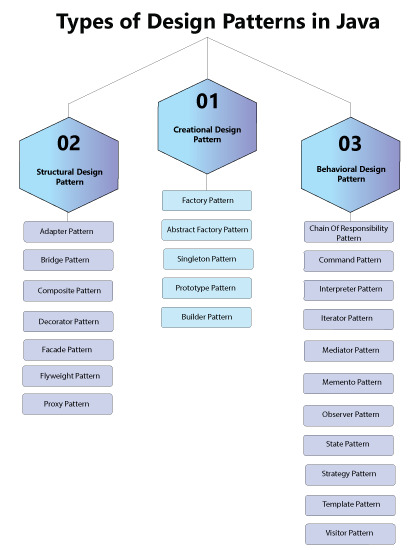
#java#programming#javaprogramming#code#coding#engineering#computer#computerscience#computertechnology#software#softwaredevelopment#education#technology#design#patterns#online
1 note
·
View note
Text
Hi, I'm Osaka
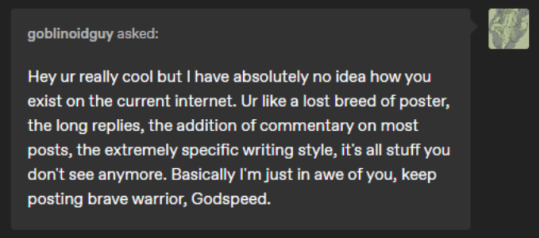
I'm a hobbyist designer, and I research esoteric concepts on the periphery of mecha to find new views nobody else is writing about. I also am obsesed with trying to push the genre forwards.
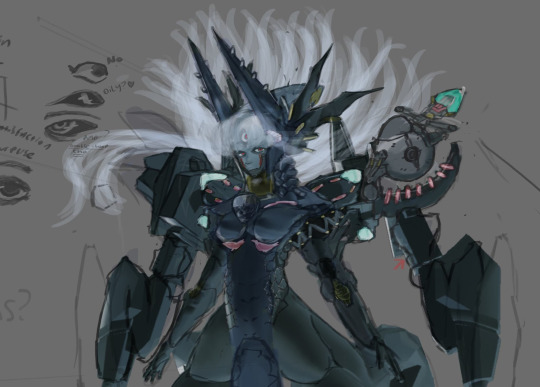
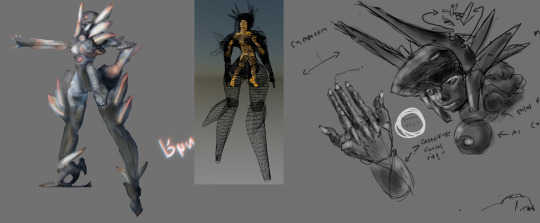

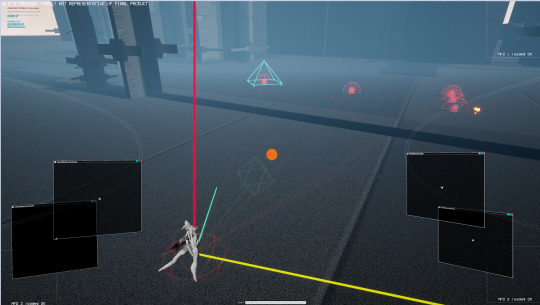
I also took up programming to build a game faster than ACFA, more airborne than Ace Combat, and more "art of the blade" than Zone of the Enders 2 by studying mecha games through the lens of published declassified military grade airwar and psywar human factors engineering and psychology concepts.
I want to make this game about mechposting and the trans experience, but I need your help: not money, but to speak with you about mecha.
The writing is simultaniously equal parts thesis to microfic a lot of the time, so your milage may vary.
Scroll through the mess below and find what suits you best.
Please.
Mecha Theory Writing
A comprehensive explanation of the evolutionary path from conventional ground and air vehicles, including a comprehensive outline of a functioning control-design based on the inceptor/software model seen in unmanned drones and 5th gen aircraft, complete with explanations.
The evolution of the walking thing called “mecha" (original)
Chapter 0: Establishing terminology & Concepts Part 1: Defining "the mechaness" of something: the 8 principles of mecha Part 2: Feisability: Mecha aren't realistic, but not for the reason you think
Chapter 1: How does "mecha" come into existence/why would you want one? Part 1: An evolution from ground vehicles of today Part 2: Skating, to walking, to running, to flight Part 3: “Why transform in the vacuum of space?”
Chapter 2: Cockpit & Software Design Control Theory Part 4: On Mecha Control Theory: Considerations Part 4a: On Mecha Control Theory II: OKAWARA Part 4b: On Mecha Control Theory III: TOMINO Part 4c: On Mecha Control Theory III: NAGANO
The World of Armored Core
An exploration of the world of Armored Core, using research into real phenomenon and engineering systems to infer how the world may itself function
Kojima particle physics (part 1): What are they? Kojima particle physics (part 2): The Human Consequences NEXT cockpit design (part 1): AMS and Lynx NEXT Cockpit Design (Part 2): G-force Tolerance Technocrat is SpaceX, and the legacy of Musk’s father (lmao) I am a 4th gen douchebag, and I love it (love-letter to ACFA) 4th gen shitpost: white gopnik
How To Domesticate Your Pilot
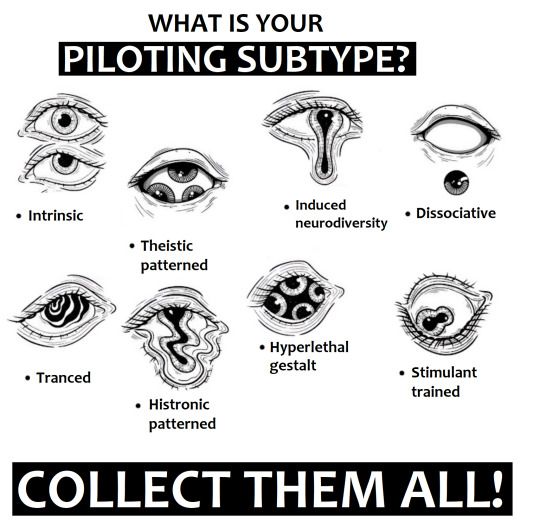
A husbandry guide for handlers, consisting of opinions and thoughts from various trainers and operators, as well as pilots. Includes practices, procedures, articles, stories and snippets.
I'm currently testing the waters with snippets and will likely be posting it out of order. I am extremely hungry for any and all possible feedback
If anybody knows the original source of the image of the eyes (which I first saw in a youtube ad) I'd love to know. I very much would like to commission them.
Inspired by mechposting
Chapter 3: Do not Abuse Your Wolves (Psychological patterning) Part 1: Action patterning (Initial Phases) Part 2: Action Patterning (Risks) Part 3: Once upon a mechanism
On mecha design: My personal thoughts on the assemblies of shape, form in the context of motion, action and function 1. Does anybody else have physical characteristics they find the most appealing? 2. Thoughts on self-altering dynamic form, and proportion designs 3. Shoji Kawamori and Armored Core: designers hallucinate, but do they hallucinate too? 4. Why is Gundam Gquuuuux called Gundam Gquuuuux?
Mechsploitation thoughts

#Mechposting
My personal thoughts on piloting culture, and mechanical design
1. The eroticism of the machine: Megastructures 2. Beyond pilebunker: The Grind-blade and the legacy of Overweapons 3. FLAT/Touchscreens are an act of hate: I will teach you love 4. You do not need to pick between a big hammer or daggers if you are a robot 5. O'Socks combat mix (tw: substance abuse) 6. Team dynamics, addiction, conflicts of interest and marketing 7. Commuication is hard, and mecha feet are cool 8. Morrigan Aensland is mecha and you cannot change my mind 9. re: Last Exile is not dieselpunk; its post-steampunk deleuzian dreams 10. Mecha PMC promotion is back, in pog form 11. Bodies, corporeal schema, and the body language of pilots 12. The blessing of the hounds; main system engaging combat mode 13. Exotic doctrine: Grappling & Booster-fu // torsion, aspect and control 14. Osaka, why do you always want to talk about ACFA? 15. You walk, so they can run
# Miscposting: Immacullate vibe-topia Pilot, for you: Love. Love. The sound of the ideal cockpit Left Hand/Right hand [gone]-- Mechposting vibes soundwall 🇸🇮🇨🇰🇧🇪🇦🇹🇸 🇹🇴 🇸🇪🇪🇰 🇦🇳🇩 🇩🇪🇸🇹🇷🇴🇾 🇹🇴: A #mechposting playlist [ongoing] Cicatrix: A writing playlist Sounds for violence: Mecha games vs FPS games
# Pilotcore: Dress & attire 1. Attire concept (includes #mechposting patch list) 2. Crew attire for things other than piloting a giant robot 3. Singleton over-jacket 4. Radios, straps and whips 5. Wearable keyboard for pilots 6. What color should a flight-suit be? (#AskOsaka from @siveine)
The Learning Tree
Reading this will help you grow as a person, or ask questions
"I experience depression as a failure of resource allocation systems" Adult social skills 101, because the world broke our ability to understand eachother Mental health: Things I wish I knew in my teens, my 20's or even my early 30's Sex-positivity, associations, critical thinking & deradicalization Crossing the hrt libido event horizon without libido heat-death by making biscuits Fool!: Your nostalgia isn't real: Your past has been stolen from you! Why Linux diehards are morons, and so is everybody else too On the ecology of slurs and the evolution of language Individualism can mean many things. The three fetishes of the human condition The real meaning of "you will not be an anime girl, you'll be your mom"
Nothing, but content for contented malcontents
Insightful, but stupid.
The collapse of the anime ecology's biodiversity Cycles of Nostalgia: Nobody is going to be nostalgic for Corporate Memphis Europe doesn't teach the Odyssey: Americentricism's fetishism is already its downfall Feeling used: The eternal disappointment of the Sawano Drop Lame? Bitch please: Clubbing deserves to go extinct every pmdd transmasc is that badass hot painting of satan crying The reviewer made a major error The Maid's Paradox Bread real
The horrors
Robo ComBAT: Cactus Jaque (original)
The Fear
Concerning plunges into the ne plus ultra culture of tomorrow
Humbert complex: When people prefer what they imagine to what's really there White Diamond, fascism, projection, ego, how Steven Universe botched its end. Sandwich names: the internet sucks now and smartphones are to blame! Gatekeeping is weird and knowledge-checks are arbitrary nonsense "The internet feels gross now", a trajectory of human events Providing feedback is also a skill and not everybody has it. AI isn't evil but it does embolden the worst people economics is just twitter brain for worth Do you?
My actual projects:
Art (I'm kind of private about my output and don't post often, sorry)
Pixelart: A very silly computer design that makes me smile idk
Games:
Project Force: 6dof aerodynamic high speed robot action [ongoing] Inspired by Armored Core For Answer, Freespace 2, Zone of the Enders 2 & Ace Combat 3, this game aims to merge their elements into a high speed mech sim.
e: yeesh this pinned post is getting kinda huge, I should break it into sub-pages or something so nobody can ever see any of it lol
110 notes
·
View notes